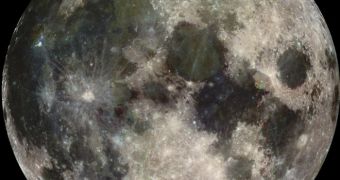In certain areas on the Moon, magnetic field anomalies discovered in past researches appear to underlie the existence of mini-magnetospheres, a new study indicates. The finding is very interesting because the natural satellite features no full -fledged magnetosphere.
Such a structure is a hallmark for planets with active cores, or for the large gas giants. A magnetosphere is basically a layer of the atmosphere that acts as a deflector shield against incoming radiation.
Earth's defense system protects our planet's surface from the effects of powerful solar storms and coronal mass ejections (CME). The billions of tons of charged particles emitted by the Sun would otherwise devastate the surface.
It is safe to say that life would have not evolved the way it did had Earth not been protected by a magnetosphere. Powerful ultraviolet radiation would have damaged materials such as DNA, RNA, amino-acids and proteins before they could evolved.
But, while we' are fortunate enough to live on a planet with a strong defense system, other bodies in the solar system were not that lucky. Bodies such as Venus and Mercury are undefended.
In the case of Venus, a magnetosphere could not develop because the planet lacks a strong magnetic field to generate it. Mercury is in the same situation, but only because its atmosphere contains particles that interact with the magnetosphere, rendering it useless.
What is interesting to note is that the Moon has no magnetic field and no atmosphere. Yet, the new research seems to indicate that it does have small areas that are protected by magnetosphere-like defenses.
The study was led by an international team of experts from Sweden, India, Switzerland, and Japan, who used data collected by the Indian Space Research Organization (ISRO) Chandrayaan-1 Moon orbiter.
The discoveries were made when the group looked over data on the density of backscattered hydrogen atoms that are scattered by the lunar surface. The particles come from solar winds.
Unabated by a magnetosphere, they slam int the lunar surface, and about 16 to 20 percent of the protons they contain are reflected away into space, Universe Today reports.
Over certain regions, atoms excited above the 150 electron volts threshold are not reflected back to space at the same percentages. The area of interest is located near the Crisium antipode.
Local magnetic field strength reaches levels of hundreds of nanotesla here, which is a lot higher than at other locations. The result is an area some 360 kilometers in diameter that appears as if it's protected by a magnetosphere.
Below energy levels of 100 electron volts, the phenomenon disappears, the researchers say, adding that the area has no clear boundaries. This means the phenomenon is not caused by invisible shock waves.

 14 DAY TRIAL //
14 DAY TRIAL //